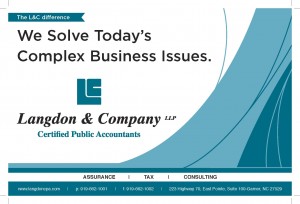The Scoop on Educational Tax Credits
by Taylor Elliott
 There are several educational tax credits and deductions available, but how and when do they apply? The IRS recently published the article “IRS Summertime Tax Tip 2014-23” to help taxpayers understand the tax benefits that are available when educational expenses have been incurred during the year. The following excerpt from that article outlines some key factors:
There are several educational tax credits and deductions available, but how and when do they apply? The IRS recently published the article “IRS Summertime Tax Tip 2014-23” to help taxpayers understand the tax benefits that are available when educational expenses have been incurred during the year. The following excerpt from that article outlines some key factors:
- American Opportunity Tax Credit. The AOTC can be up to $2,500 annually for an eligible student. This credit applies for the first four years of higher education. Forty percent of the AOTC is refundable. That means that you may be able to get up to $1,000 of the credit as a refund, even if you don’t owe any taxes.
- Lifetime Learning Credit. With the LLC, you may be able to claim a tax credit of up to $2,000 on your federal tax return. There is no limit on the number of years you can claim this credit for an eligible student.
- One credit per student. You can claim only one type of education credit per student on your federal tax return each year. If more than one student qualifies for a credit in the same year, you can claim a different credit for each student. For example, you can claim the AOTC for one student and claim the LLC for the other student.
- Qualified expenses. You may include qualified expenses to figure your credit. This may include amounts you pay for tuition, fees and other related expenses for an eligible student. Refer to IRS.gov for more about the additional rules that apply to each credit.
- Eligible educational institutions. Eligible schools are those that offer education beyond high school. This includes most colleges and universities. Vocational schools or other postsecondary schools may also qualify.
- Form 1098-T. In most cases, you should receive Form 1098-T, Tuition Statement, from your school. This form reports your qualified expenses to the IRS and to you. You may notice that the amount shown on the form is different than the amount you actually paid. That’s because some of your related costs may not appear on Form 1098-T. For example, the cost of your textbooks may not appear on the form, but you still may be able to claim your textbook costs as part of the credit. Remember, you can only claim an education credit for the qualified expenses that you paid in that same tax year.
The article also points out that income limitations as well as residence status must be considered. If you, a family member, or dependent has recently started college or gone back to school, please contact our office so that our dedicated tax professionals can help you navigate your particular facts and circumstances to determine what educational benefits are best for you.
Taylor Elliott is a tax manager with Langdon & Company LLP. She specializes in tax compliance and planning.






 0.9% Tax on Wage and Self-employment Income:
0.9% Tax on Wage and Self-employment Income:









 , as many as 70% of applicants are expected to be eligible to use this form, not only slashing the time spent by those charities in completing the application but also minimizing the time spent by the IRS in reviewing their files. The electronic filing requirement is also expected to increase the efficiency of the process. An application fee of $400 must be electronically submitted with the application as well.
, as many as 70% of applicants are expected to be eligible to use this form, not only slashing the time spent by those charities in completing the application but also minimizing the time spent by the IRS in reviewing their files. The electronic filing requirement is also expected to increase the efficiency of the process. An application fee of $400 must be electronically submitted with the application as well.
 by Rachel Owens
by Rachel Owens
 Starting in 2013, individuals, estates and trusts may be subject to the Net Investment Income Tax (NIIT). NIIT is surtax of 3.8% which is applied to the lesser of:
Starting in 2013, individuals, estates and trusts may be subject to the Net Investment Income Tax (NIIT). NIIT is surtax of 3.8% which is applied to the lesser of:
 Today many folks find themselves working into the Social Security years, whether by choice or necessity. Our Firm fields this question regularly. If Social Security was your only source of income in 2013, your benefits may not be taxable. You also may not need to file a federal income tax return. If you get income from other sources, then you may have to pay taxes on some of your benefits.
Today many folks find themselves working into the Social Security years, whether by choice or necessity. Our Firm fields this question regularly. If Social Security was your only source of income in 2013, your benefits may not be taxable. You also may not need to file a federal income tax return. If you get income from other sources, then you may have to pay taxes on some of your benefits.